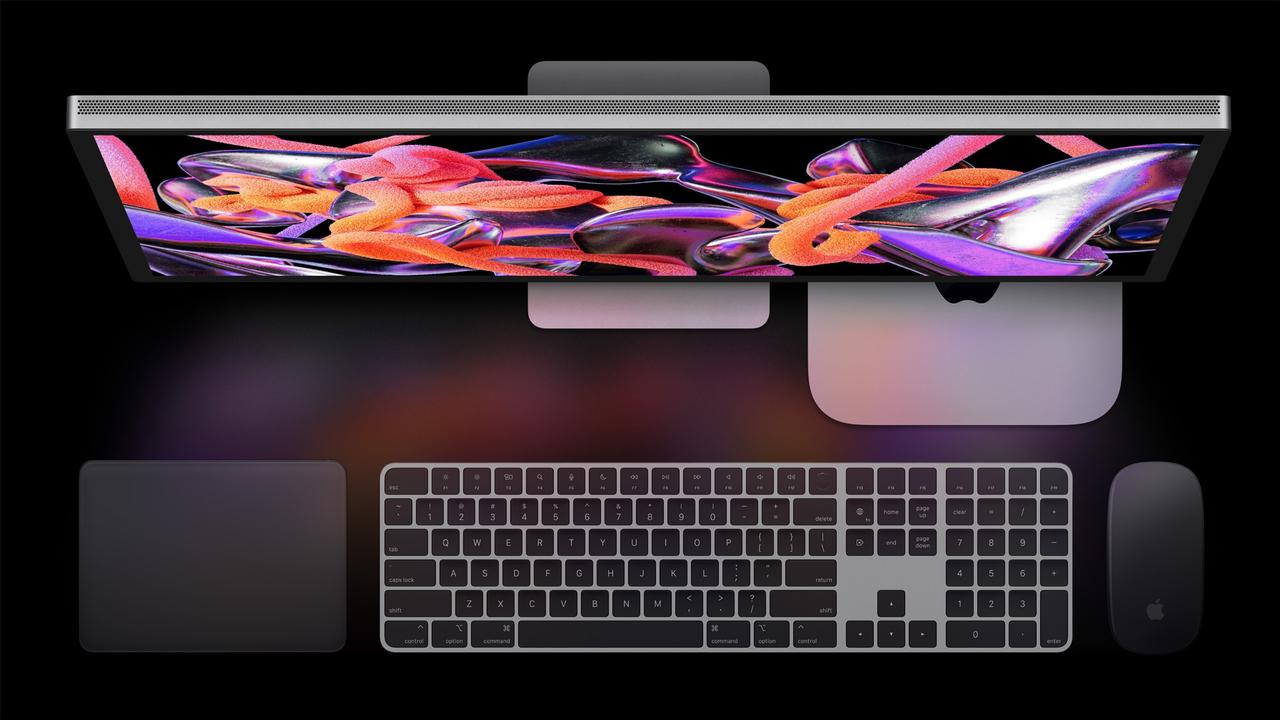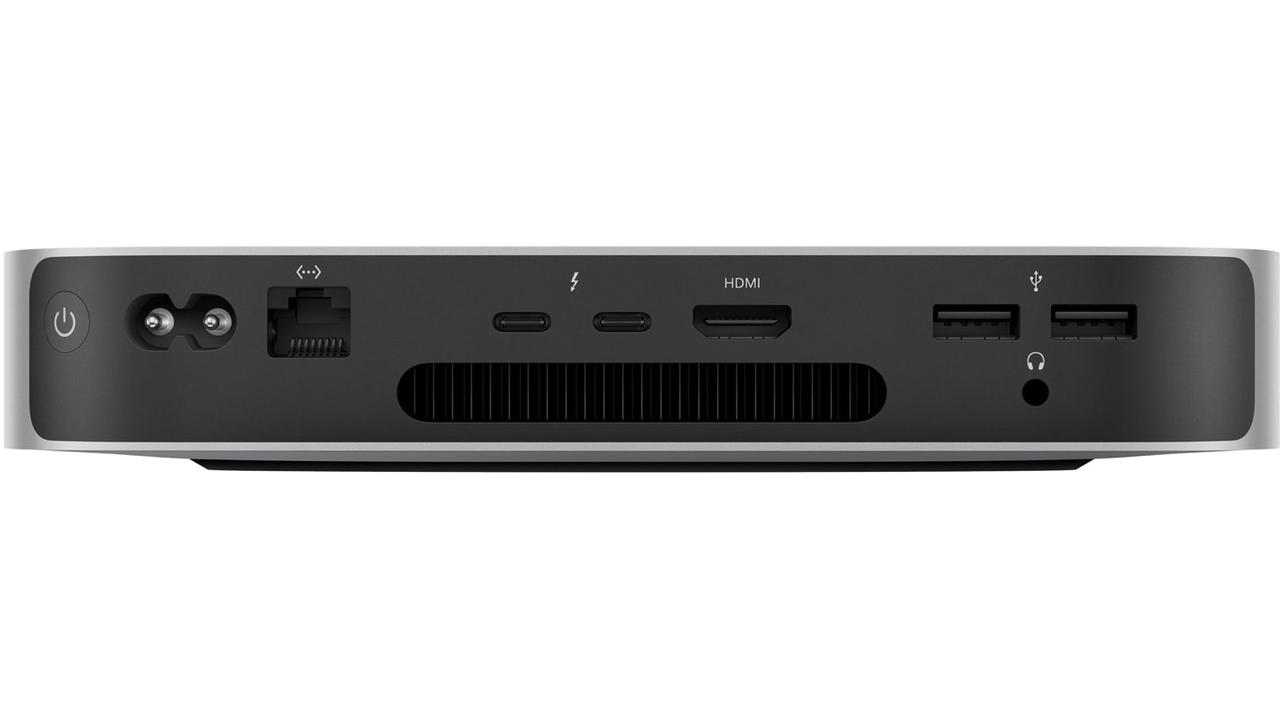Review: Apple’s newest Mac mini is powerful and affordable, so what’s the catch?
Apple’s Mac mini is getting more and more powerful – and with a $999 entry point, is this the tech giant’s master plan to convert Windows users?

Business
Don't miss out on the headlines from Business. Followed categories will be added to My News.
There isn’t much you can get under a $1000 in the desktop computer market nowadays, so when one of the world’s largest tech companies delivers a powerful product in that range, eyebrows are sure to rise.
Apple’s Mac mini, announced in mid January and available in store from Friday, arrives at least $400 cheaper than the most affordable iPhone 14 ($1399) and $1000 cheaper than the MacBook Pro 13 ($1999) with similar specs.
The “headless” device, a square desktop computer about the size of a dinner plate, arrives with Apple’s brand new M2 chip ($999) or M2 Pro chip ($1999).
It features an impressive 8-core CPU, 10-core GPU, 8GB unified memory and 256GB or 512GB SSD storage with the M2 chip; and a 10-core CPU, 16-core GPU, 16GB unified memory and 512GB SSD storage with the M2 Pro chip.
All three versions have a 16-core neural engine, two USB-A ports, a HDMI port, a gigabit ethernet inlet, a headphone jack and either two or four thunderbolt 4 ports.
Impressive. So what gives?

It would appear the big tech giant is looking to convert its iPhone and iPad users to the Mac range through a number of new continuity features, as well as adapting the user experience to somewhat replicate that of a mobile device.
Colleen Novielli from Apple’s Mac marketing team makes no secret of this.
Mac introduced the mini in 2005 as a “headless system” requiring users to bring their own keyboard, mouse and display. Ms Novielli said this approach made for a simple changeover and allowed customers to use their existing keyboard, mouse and monitor with the device.
“Because of that, it was the most affordable way for a lot of customers, particularly PC switchers, to experience Mac OS,” she said.
In 2023, Apple is seeking to attract more professional users to the mini range with the introduction of an upper-tier model which includes the M2 Pro chip.
“Of course, you have this other category of pro customers that we’re trying to encourage to use Mac mini for the first time,” she said.
For an everyday user, Apple’s “continuity features” can relieve a lot of often cumbersome tasks. Gone are the days you’d have to email, instant message or use iCloud to transfer content from your mobile.
Now, a user can simply click copy from their iPhone and then hit command+V on the Mac mini, and paste what it is they’ve copied. The features work both ways.
Continuity also extends to FaceTime, answering calls and image editing by allowing the user to use Apple’s automatic cropping feature which can – by holding a finger down on the subject of an image – crop out the subject and paste it into messages, notes and other photo editing software.
On the editing front, Apple promises up to 50 per cent faster work in Adobe Photoshop.
Meanwhile, video editing in Final Cut Pro is twice as fast. The device can also stream two 8K ProRes 422 videos at 30 fps or up to 12 streams of 4K ProRes 422 video at 30 fps.

The Australian tested streaming across Netflix, Spotify and YouTube as well as running a content management system, and having 22 tabs open without any issue. This should leave most professional users confident in the device.
Having the power of a computer with the ability to use the same or similar gestures a user would on their iPhone or iPad is incredibly handy and almost does, as Apple claims, feel like a seamless transition.
Use of a trackpad rather than a mouse is a must and can relieve a little stress on the hands.
A three finger swipe up gesture is the same as swiping up an iPhone, gesturing in with an open hand brings the user to the application page, two fingers is used to scroll and using two fingers to swipe left from the right-hand side of the screen brings up the notification centre.
One bugbear is dragging and dropping items. The standard click and drag, while possible, often goes astray. There is a fix for this with a three-finger drag option which can be turned on via accessibility settings.
The trackpad also seems to get confused when a cable touches it while performing different gestures.
For older Windows users, one of the most noticeable changes would be the performance of Apple’s silicon processor, said Doug Brooks, another in Apple’s Mac marketing department.
The company began the transition from Intel processors late in 2020, and since then, the MacBook Pro, MacBook Air, iMac and Mac mini have been designed with the in-house built silicon processor.
The difference is noticeable even with Apple’s more recent devices like the iMac, Ms Novielli said.
“If you are coming from an Intel-based system, even something like that 27 inch iMac that was instant Intel-based, you are going to get fantastic performance increases with these systems,” Ms Novielli said.
The verdict? At $999 and far smaller than your average desktop, there’s little not to like.
More Coverage
Originally published as Review: Apple’s newest Mac mini is powerful and affordable, so what’s the catch?









